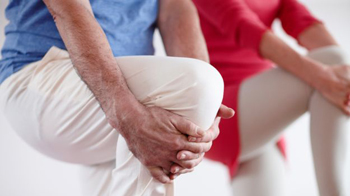May 3: The more weight obese and overweight individuals lose, the better it could be for their knee joints, new research suggests.
Being overweight or obese can place extra pressure on joints and cartilage, causing them to wear away. In addition, people with more body fat may have higher blood levels of substances that cause inflammation in the joints, raising the risk for osteoarthritis.
“For this research, we analysed the differences between groups with and without weight loss,” said the study’s lead author Alexandra Gersing from the University of California, San Francisco, US.
“We looked at the degeneration of all knee joint structures, such as menisci, articular cartilage and bone marrow,” Gersing said.
The study, published online in the journal Radiology, invoved 640 overweight and obese patients who had risk factors for osteoarthritis or MRI evidence of mild to moderate osteoarthritis.
The research team investigated the association between weight loss and the progression of cartilage changes on MRI over a 48-month period.
Data was collected from the Osteoarthritis Initiative, a nationwide research study focused on the prevention and treatment of knee osteoarthritis in the US.
Patients were categorised into three groups – those who lost more than 10 per cent of their body weight, those who lost five to 10 per cent of their body weight, and a control group whose weight remained stable.
The results showed that patients with five per cent weight loss had lower rates of cartilage degeneration when compared with stable weight participants.
In those with 10 per cent weight loss, cartilage degeneration slowed even more.
Not only did the researchers find that weight loss slowed articular cartilage degeneration, they also saw changes in the menisci.
Menisci are crescent-shaped fibrocartilage pads that protect and cushion the joint.
“The most exciting finding of our research was that not only did we see slower degeneration in the articular cartilage, we saw that the menisci degenerated a lot slower in overweight and obese individuals who lost more than five percent of their body weight,” Gersing said.





Comments
Add new comment